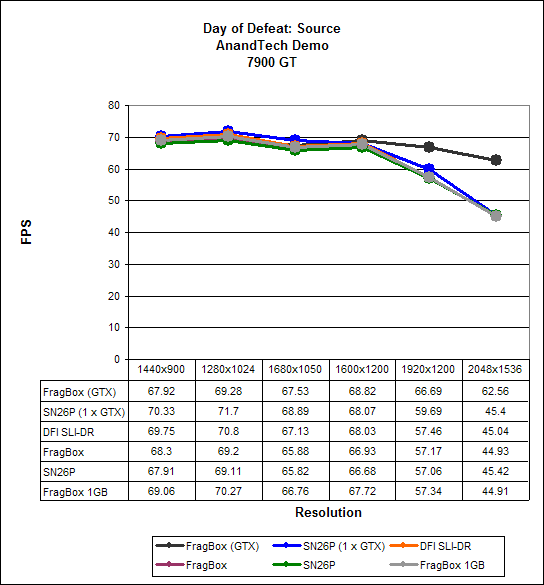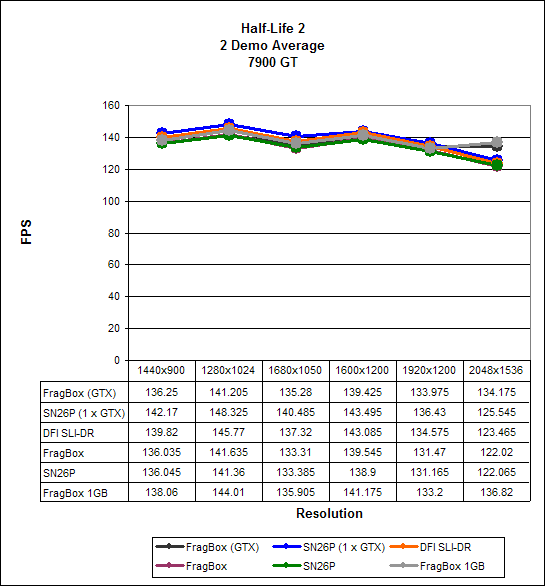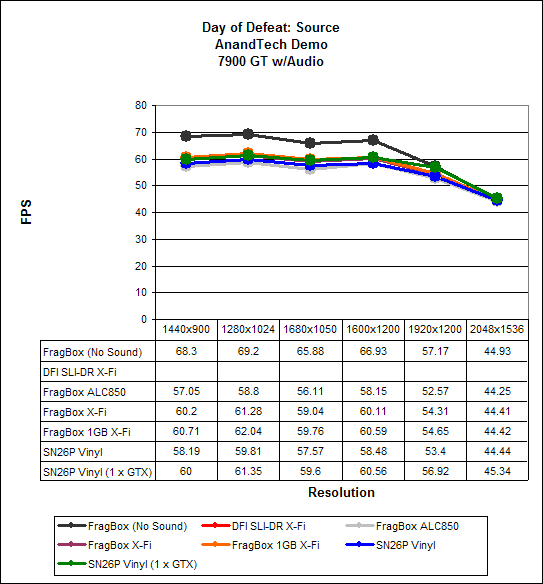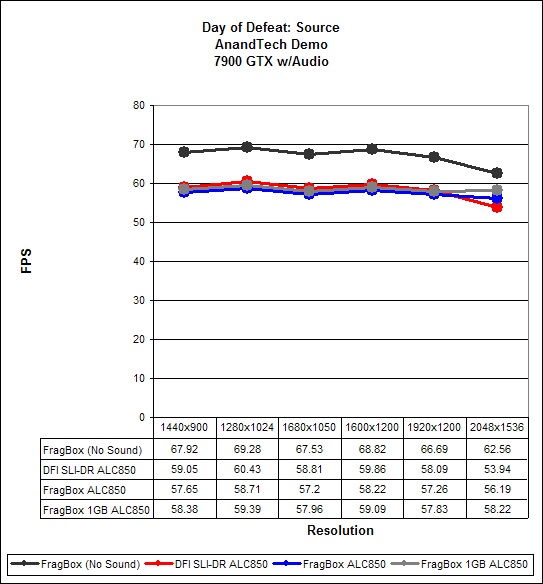Falcon Northwest FragBox SLI: Dare to Dream
by Jarred Walton on May 3, 2006 9:00 AM EST- Posted in
- Systems
Day of Defeat: Source and Half-Life 2
The Source Engine games so far show similar and yet different performance. The games are largely CPU limited except at the highest resolutions. The major difference is that where HL2 ranges from 110-170+ FPS depending on level, DODS tops out in the high 60s, and the Lost Coast level strikes something of a middle ground. DODS and Lost Coast also include a form of HDR support - we say "a form" because they don't use FP rendering, allowing them to do both antialiasing and HDR even on older hardware. At present, only ATI's X1000 series cards support AA+FP rendering, which unfortunately means that most games aren't even looking at supporting the feature. I decided to focus on DODS and the original HL2, so no Lost Coast numbers this time. (It's only one level, so I can't really consider it a true game benchmark.)




Half-Life 2 is pretty much completely CPU limited, even at the highest resolutions. 2048x1536 does begin to show some slight separation, but essentially all of the tested setups are more than fast enough. Day of Defeat: Source is in a similar situation, only with much lower frame rates. However, at 1920x1200 and 2048x1536, the GTX SLI configurations take a clear lead. What happens when we enable sound?




Being CPU limited at most of the tested resolutions, we basically see a mirroring of the earlier results. At the lower resolutions were the CPU is the bottleneck, enabling sound has a substantial impact on performance -- at 10 to 20% performance drop, roughly. At the higher resolutions with the GPU starts to become the bottleneck again -- and this is illustrated best by the 7900 GT scores -- enabling sound doesn't have nearly as much of an impact.
The Source Engine games so far show similar and yet different performance. The games are largely CPU limited except at the highest resolutions. The major difference is that where HL2 ranges from 110-170+ FPS depending on level, DODS tops out in the high 60s, and the Lost Coast level strikes something of a middle ground. DODS and Lost Coast also include a form of HDR support - we say "a form" because they don't use FP rendering, allowing them to do both antialiasing and HDR even on older hardware. At present, only ATI's X1000 series cards support AA+FP rendering, which unfortunately means that most games aren't even looking at supporting the feature. I decided to focus on DODS and the original HL2, so no Lost Coast numbers this time. (It's only one level, so I can't really consider it a true game benchmark.)




Half-Life 2 is pretty much completely CPU limited, even at the highest resolutions. 2048x1536 does begin to show some slight separation, but essentially all of the tested setups are more than fast enough. Day of Defeat: Source is in a similar situation, only with much lower frame rates. However, at 1920x1200 and 2048x1536, the GTX SLI configurations take a clear lead. What happens when we enable sound?




Being CPU limited at most of the tested resolutions, we basically see a mirroring of the earlier results. At the lower resolutions were the CPU is the bottleneck, enabling sound has a substantial impact on performance -- at 10 to 20% performance drop, roughly. At the higher resolutions with the GPU starts to become the bottleneck again -- and this is illustrated best by the 7900 GT scores -- enabling sound doesn't have nearly as much of an impact.










32 Comments
View All Comments
segagenesis - Wednesday, May 3, 2006 - link
Obviously this wont be cheap, but what an interesting feat of engineering. For a SFF computer this should literally have flames shooting out the back.Gary Key - Wednesday, May 3, 2006 - link
If they had utilized a Pentium 955EE it would have had flames coming out from all directions. :) Just kidding, not really, but we found it amazing how well this case design took thermal requirements under consideration when utilizing SLI and a FX series processor.